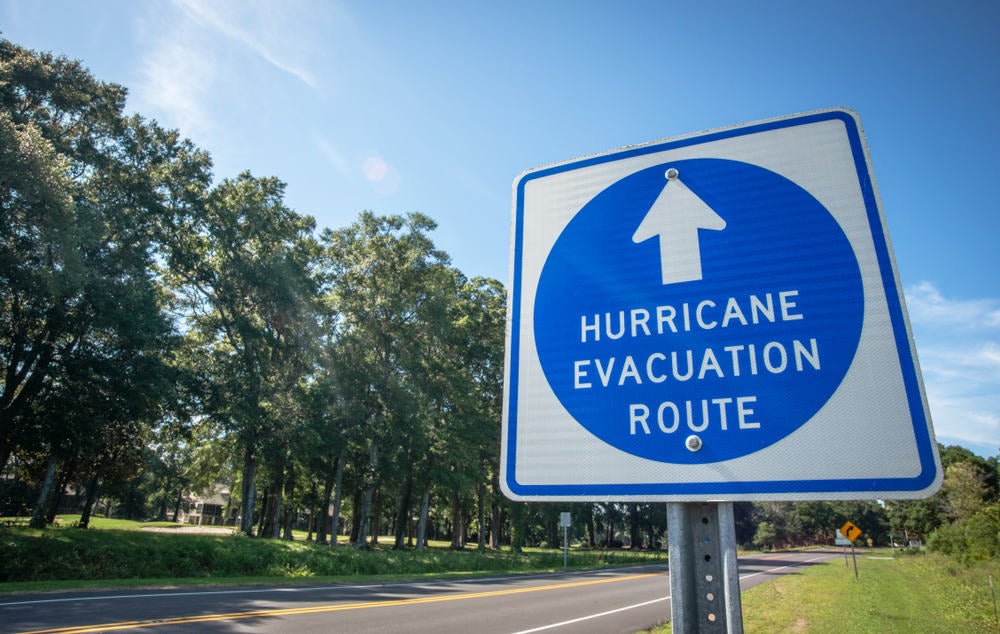
Hurricane Florence is expected to pummel the Carolinas, and has put surrounding areas on alert, later this week and into the weekend. The latest National Hurricane Center data reports sustained winds of up to 130 mph with higher gusts associated with the category 4 hurricane.
As of Wednesday afternoon, hurricane force winds extend as far as 70 miles from the center of the storm, with tropical-storm-force winds extending up to 175 miles from the center. The storm could have a heavy impact as far south as Georgia and as far north as Northern Virginia.
These conditions are projected to have some impact on East Coast energy markets. Some expected impacts include prolonged power outages, natural gas production and transportation disruptions and potential reductions in refined product supply in the Northeast, according to a S&P Global Platts report.
“Florence could impact refined products imports into North and South Carolina. While the Colonial Pipeline delivers refined products to both states, small volumes of gasoline blendstocks, diesel, and asphalt are imported into Wilmington and Charleston,” Platts Editorial Director Jeff Mower said.” The most recent monthly US Energy Information Administration data shows both ports importing a combined 454,000 barrels of refined products in June, a fraction of the roughly 308,700 b/d of gasoline sold in North Caroline alone.”
Mower said Florence could delay deliveries in both states, but the severity of the delays will depend greatly on how much storm damage is actually done and how big of a hit the states’ infrastructure takes in the days ahead.
Hurricane Florence is not expected to have a direct impact on any oil production facilities or oil refineries.
“The Northeast is heavily dependent on the Colonial Pipeline and Plantation Pipeline for refined products supplies, both of which run through the Carolinas,” the Platts report reads. “Colonial’s 2.5 million b/d system extends from Texas to New Jersey, with Line 1 moving gasoline from Houston to Greensboro, North Carolina, and the parallel Line 2 extending all the way to New Jersey. Kinder Morgan’s 700,000 b/d Plantation system ships refined products from Louisiana to the Washington, DC, area.”
Both pipelines continued to operate normally Tuesday, and both are able to operate in segments, meaning product could still be delivered to the north if portions of the pipelines in the Carolinas experienced outages. The issue arises because the northern segments could only supply as much product as was already present in the tank north of the outage, which would only cover the Northeast for a matter of days, according to the Platts report.
“Concerns that the storm would impact refined products deliveries to the Northeast were bullish for the New York delivered NYMEX RBOB and ULSD contracts. NYMEX October RBOB settled 5.5 cents higher at $2.0142/gal and NYMEX October ULSD closed up 3.42 cents at $2.2520/gal,” the report reads.
Rack prices were higher in the Carolinas. Nearly all of the state’s coastal areas are under a mandatory evacuation order, which Platts thinks could be driving increased gasoline demand as people begin to evacuate. This is a common occurrence during times of natural disasters.
“In Charleston, South Carolina, the price of unleaded, unbranded gasoline at the rack was reported at $2.0217/gal on Tuesday, up from $2.0200/gal on Monday evening, according to DTN, an independent provider of rack price data,” according to the Platts report. “In Wilmington, North Carolina, the same product was reported at $2.0635/gal Tuesday morning, up from $2.0408/gal on Monday night.”
Popular mobile app GasBuddy has activated its fuel availability tracker and made the feature available for free to those trying to evacuate the Carolinas and Virginia ahead of the storm. The app will point drivers to the closest gas station to them with available gasoline.
